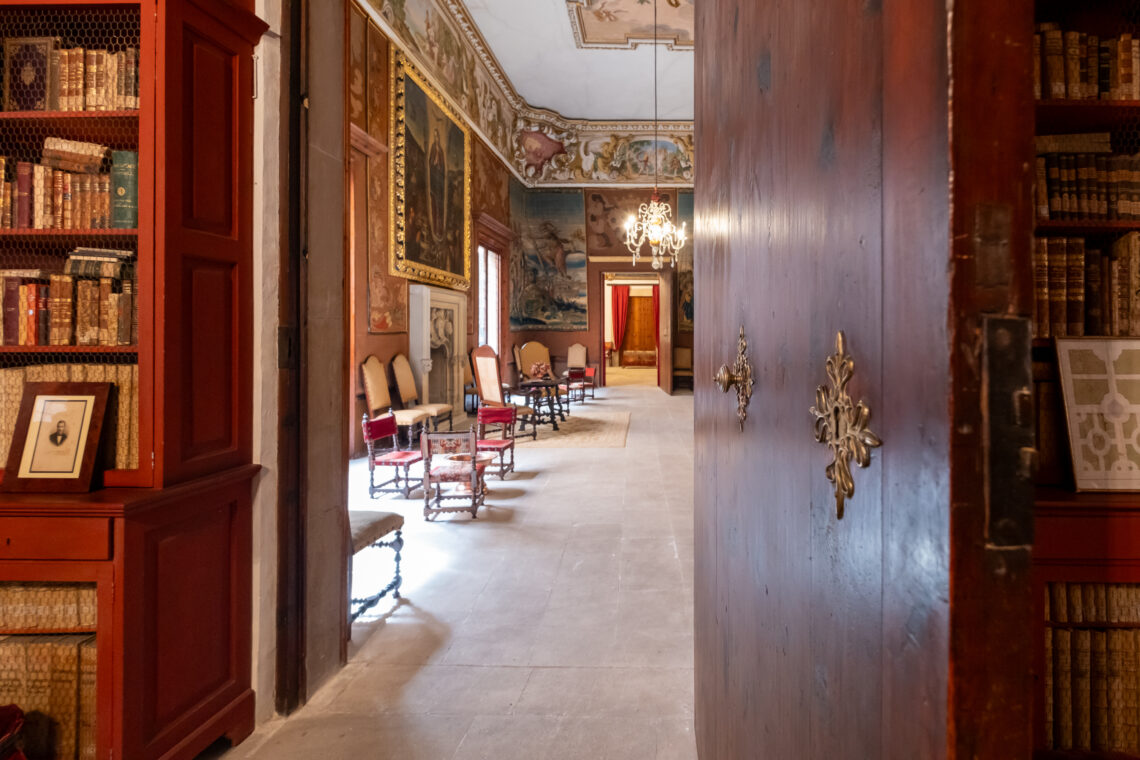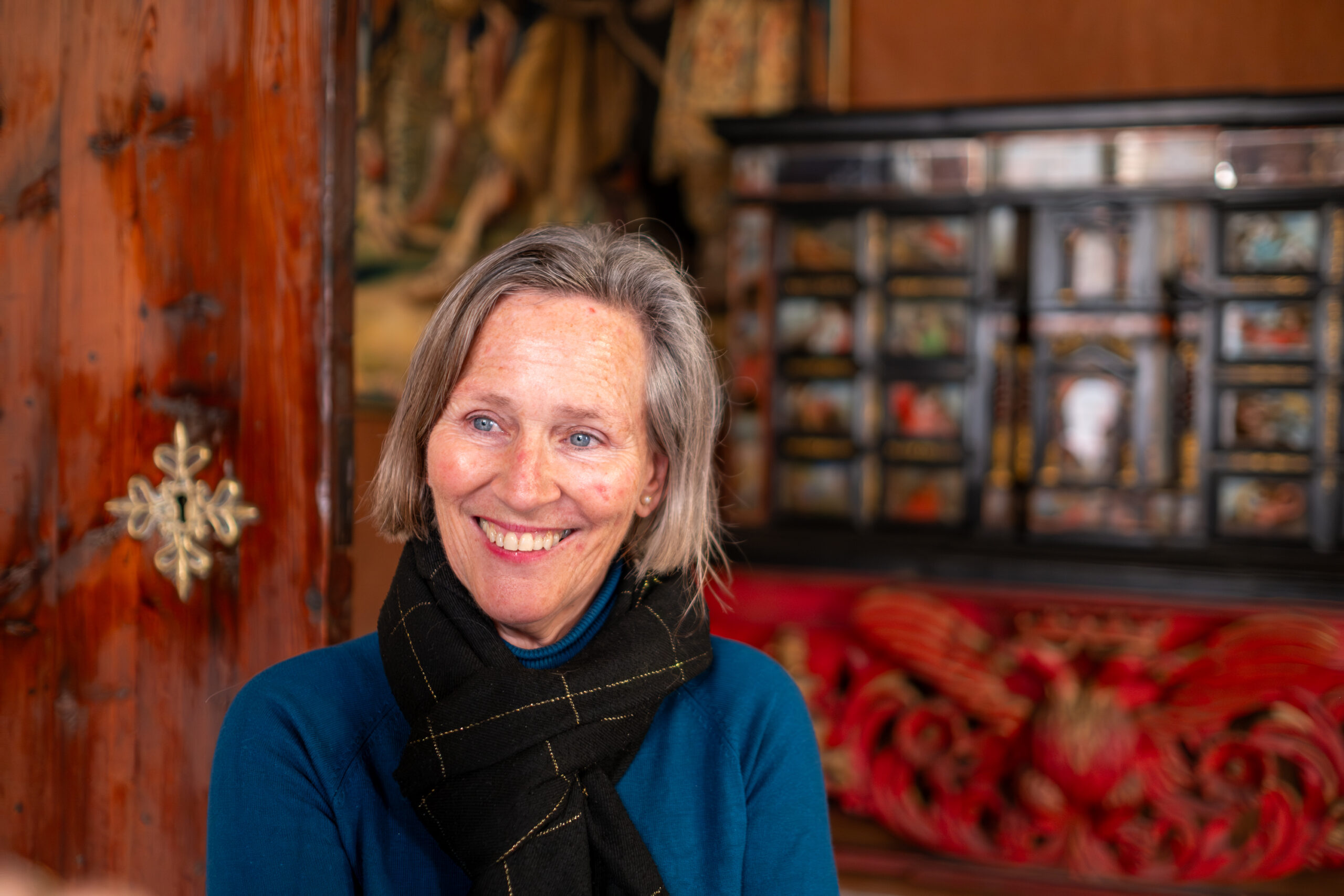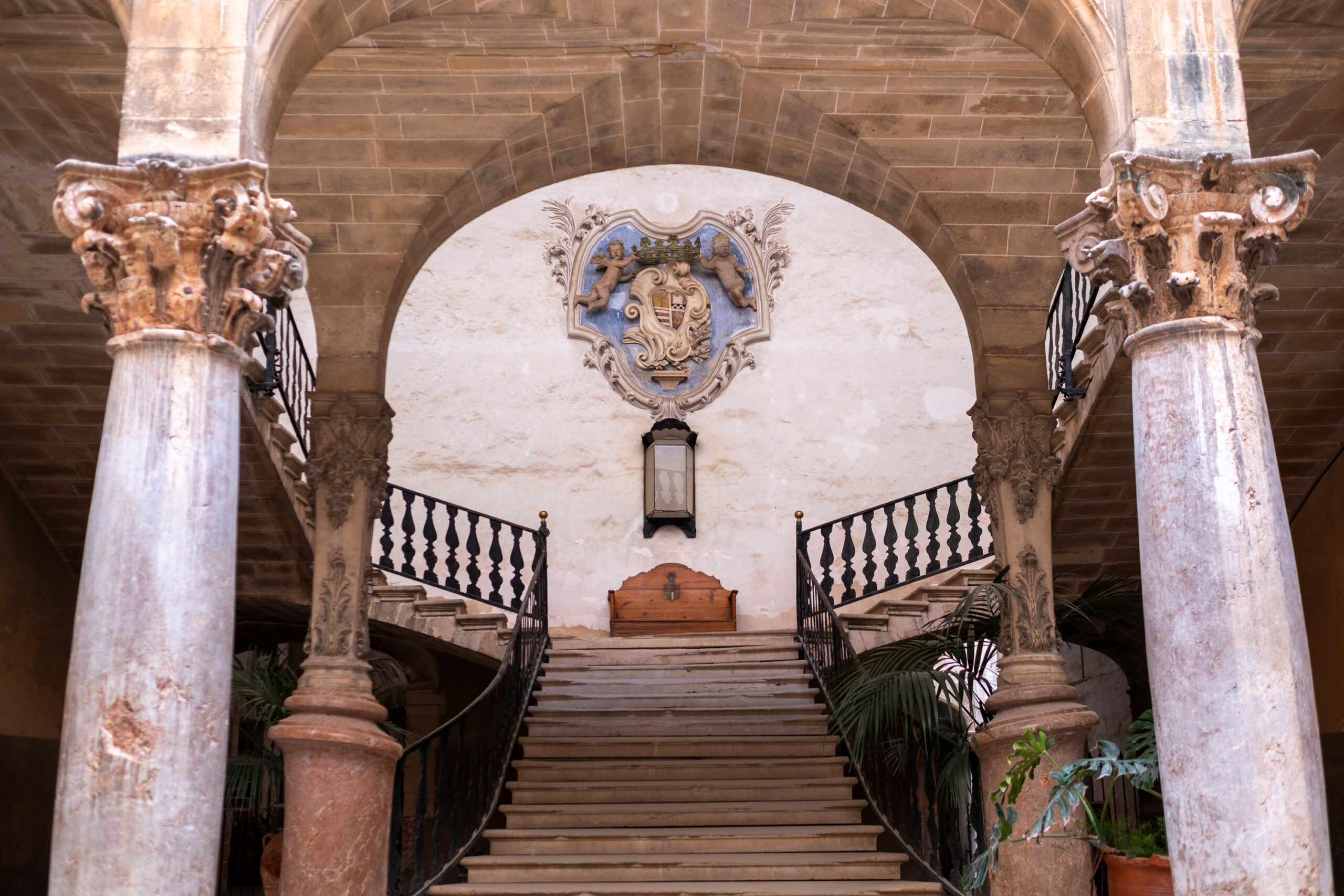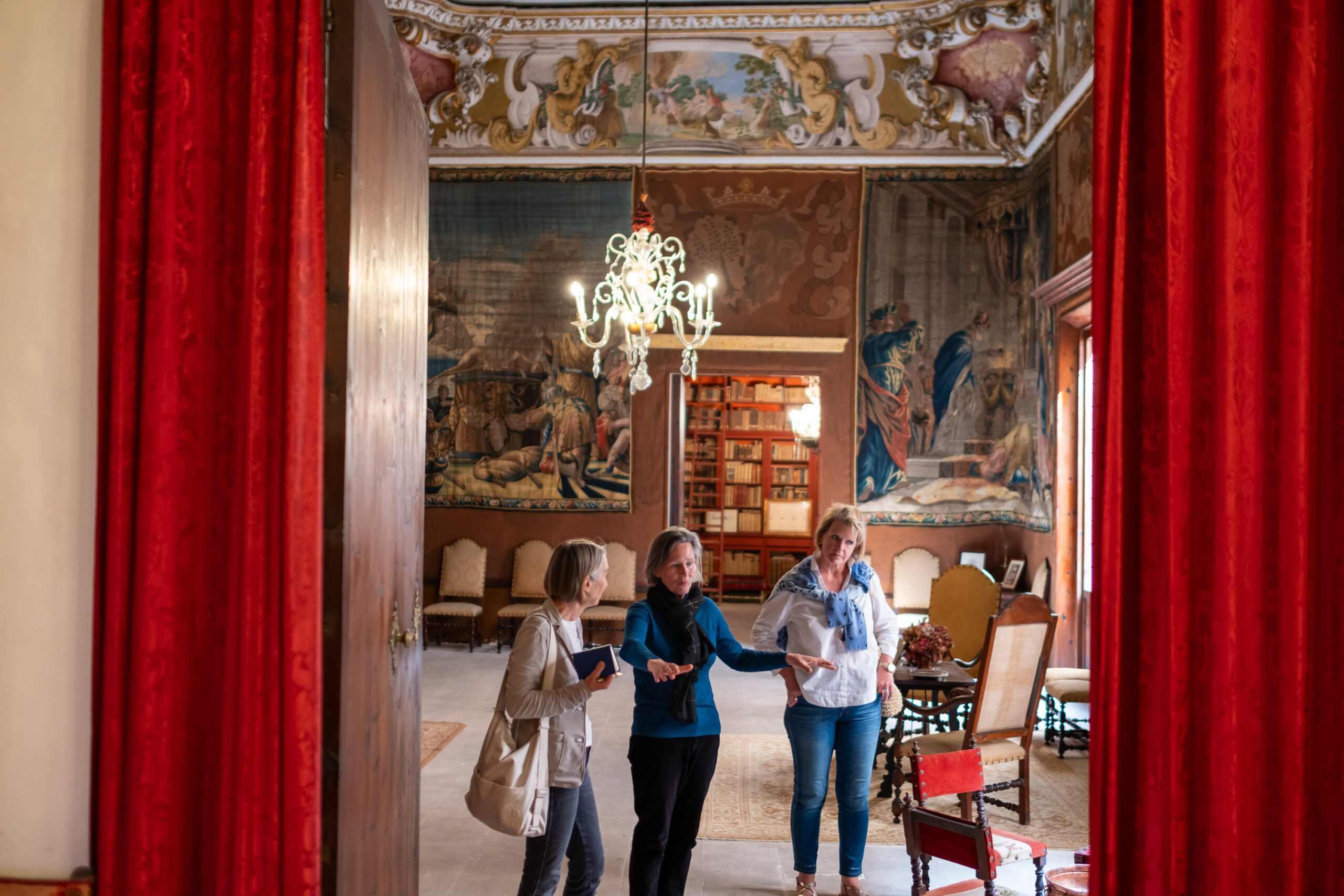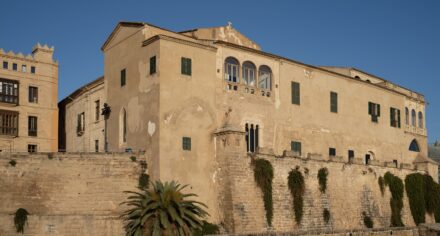It sounds like a fairy tale. Growing up in a palace and living there with your family for the 19th generation. But this place really exists. The medieval city palace Can Vivot is hidden behind a wrought-iron gate in a narrow alley in the heart of Palma. And behind this gate a world opens up that has hardly changed since the early 18th century.
Experience History
Imagine seeing history through the eyes of Count of Zavellà Pedro de Montaner y Alonso and his wife Countess Magdalena de Quiroga Conrado. Unlike in museums, everything in their private mansion has been left in its original state for 300 years. Preserving this heritage is a privilege but also a tremendous obligation to the family and the public. Because the importance of Can Vivot extends far beyond Mallorca. It is part of the cultural heritage of Spain and Europe.
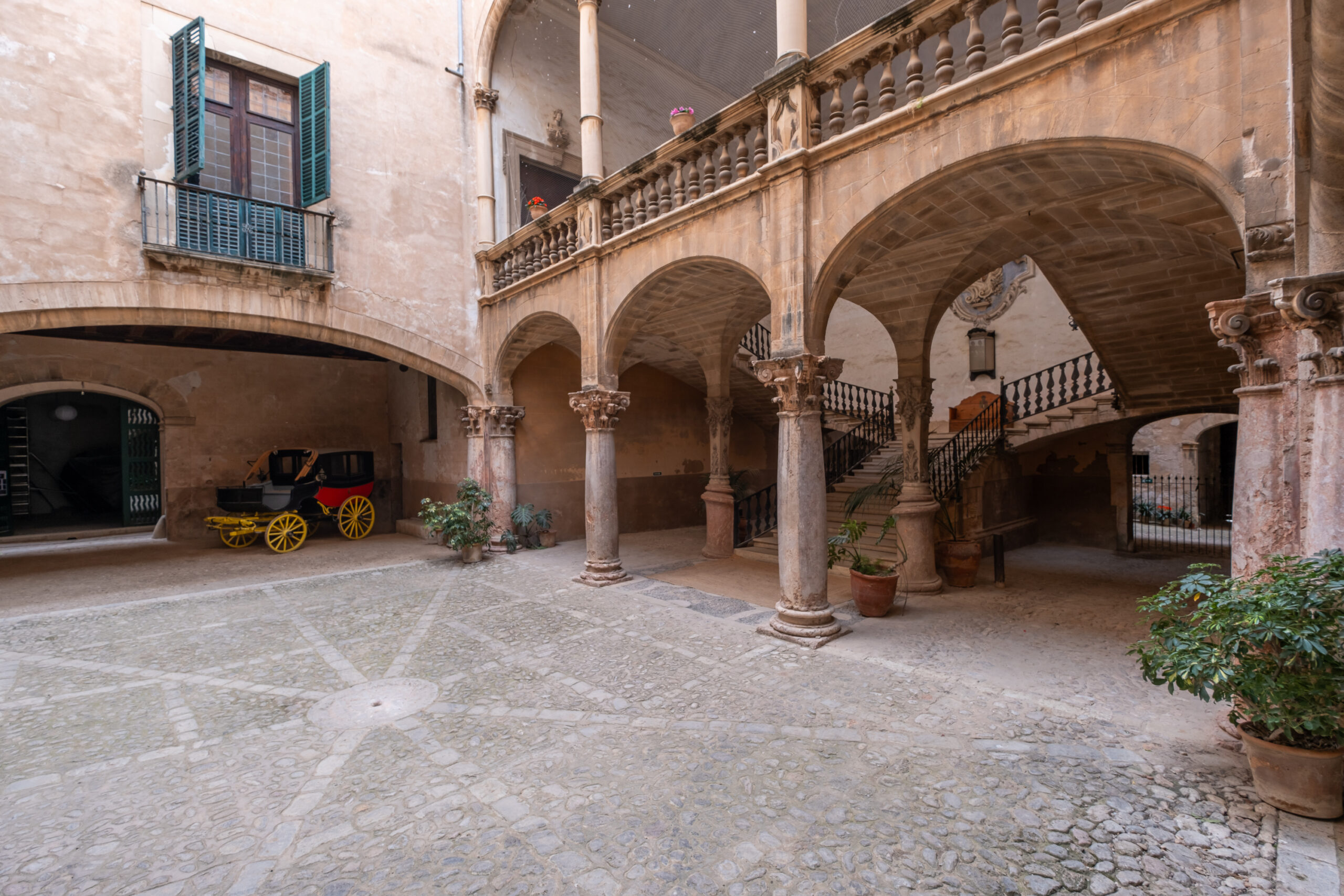
You enter Can Vivot through a magnificent patio that takes you straight back in time. Restored horse-drawn carriages are parked here under large sandstone arches. The oldest one dating all the way back to Arab times. And you wouldn’t be surprised if there were still animals at the drinking trough in the mule stable. The courtyard will come back to life when the fabulous arts and crafts market of XTANT takes place here again in a few weeks’ time.
A Guided Tour
On the grand staircase, its steps worn out over the centuries, Magdalena leads the visitors up to the main floor. Through a mighty wooden door and past the private chapel, you enter the rooms where social life used to take place. Despite the spring-like temperatures Magdalena wears sweater and scarf. As in the past, Can Vivot has no heating but at least there is electric light, today.
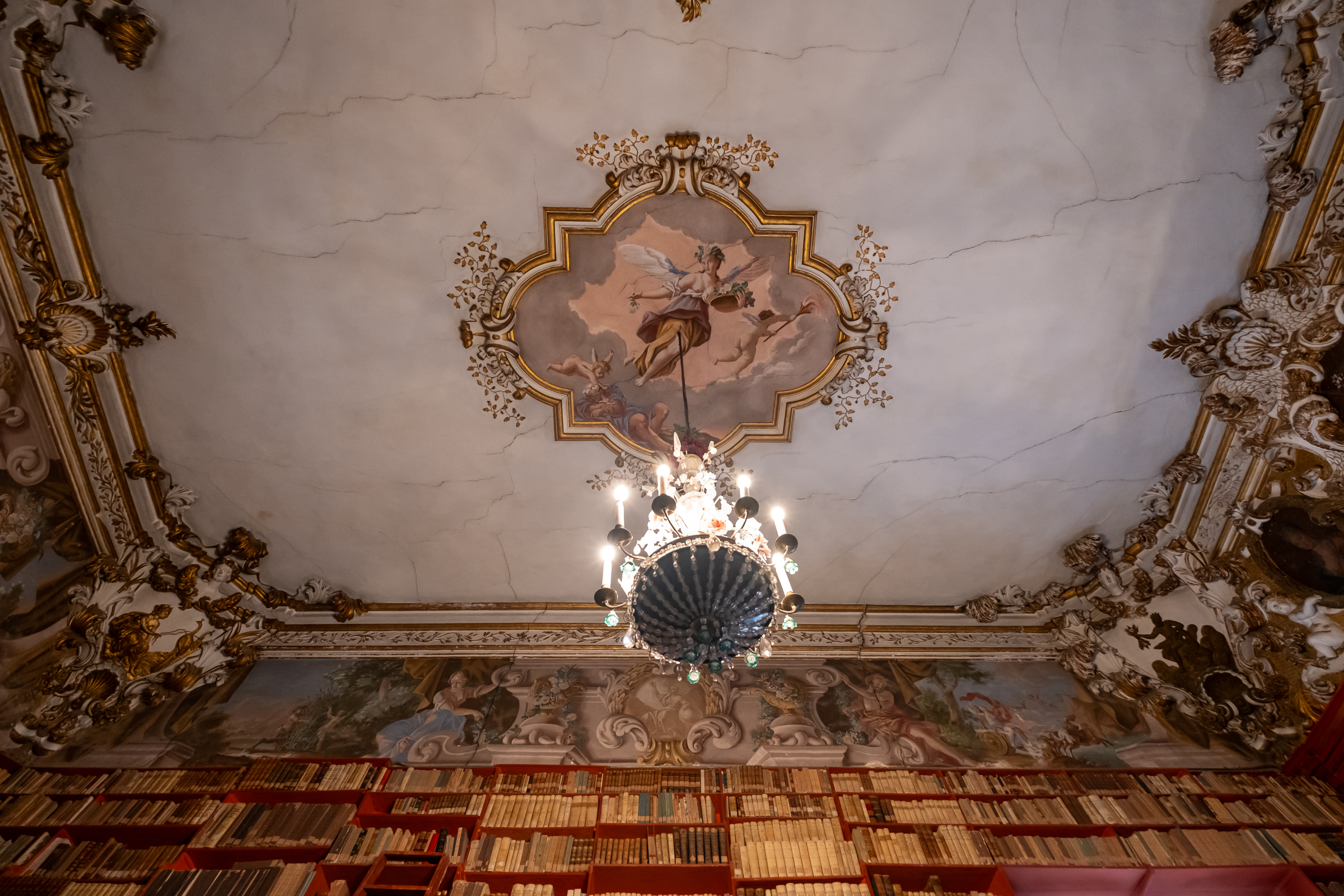
Visitors are overwhelmed, they feel humble in the face of history told by the pictures and furnishings. And small against the rooms’ sheer height of almost ten meters. The library is filled all around and up to the painted ceiling with books that the owners of the house acquired over time. Some of them behind closed doors, a reminder of the power that ideas and stories can have.
Arts and Crafts
Sun light falls through the leaded glass windows of the music room. And brings you back to the present. It also reminds of the constant work required to maintain the substance of the building, the furniture, carpets, and paintings. Only a few craftsmen still master this art today. It is almost a symbiosis because the preservation of Can Vivot and the passing on of ancient knowledge are mutually dependent.
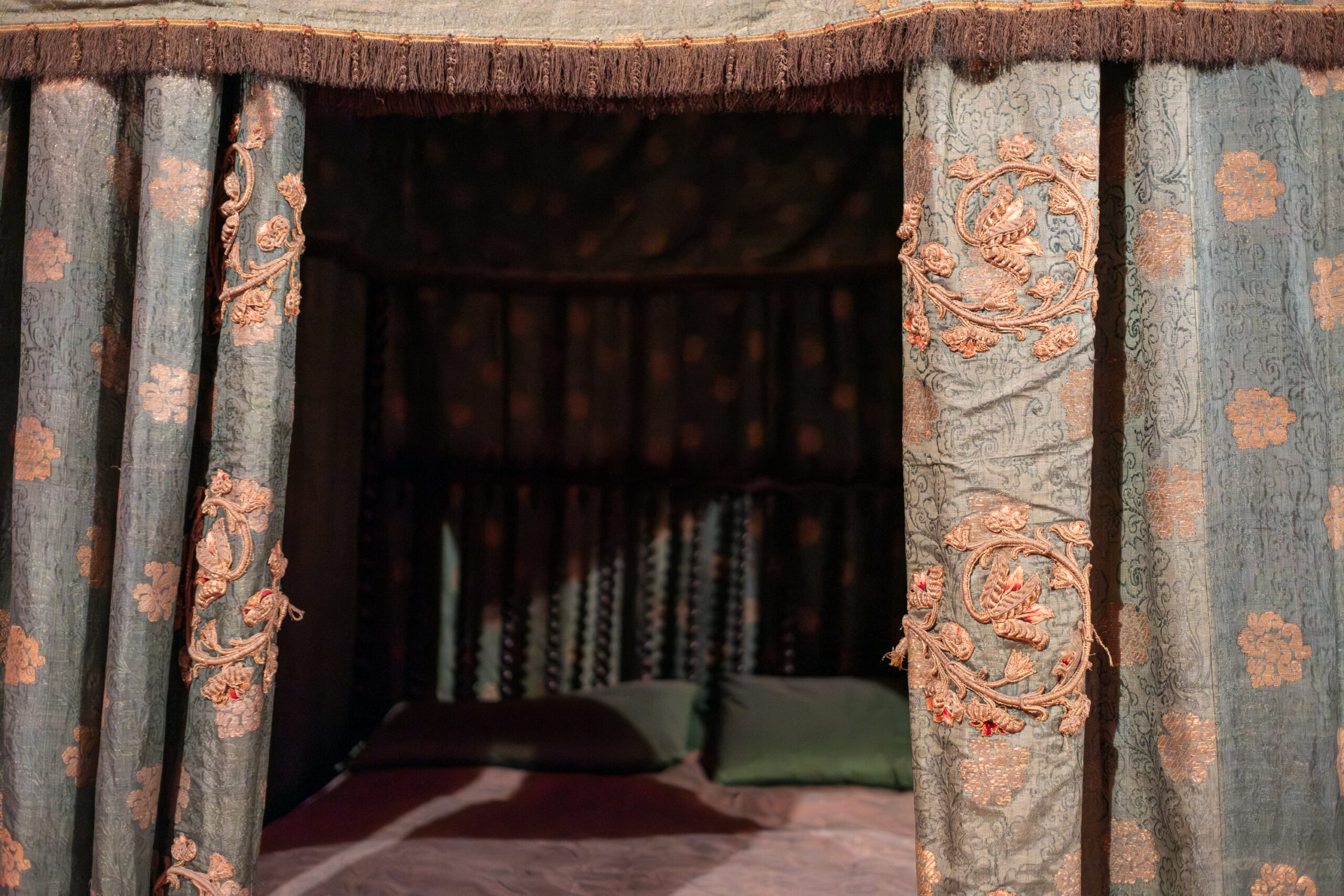
At the end of the tour waits another highlight. Contrary to what is often claimed, no king or queen has ever slept in the magnificently four-poster bed whose gold-embroidered curtains are made from a fabric gifted by Felipe V. The bed actually symbolizes the power and the presence of the royal house.
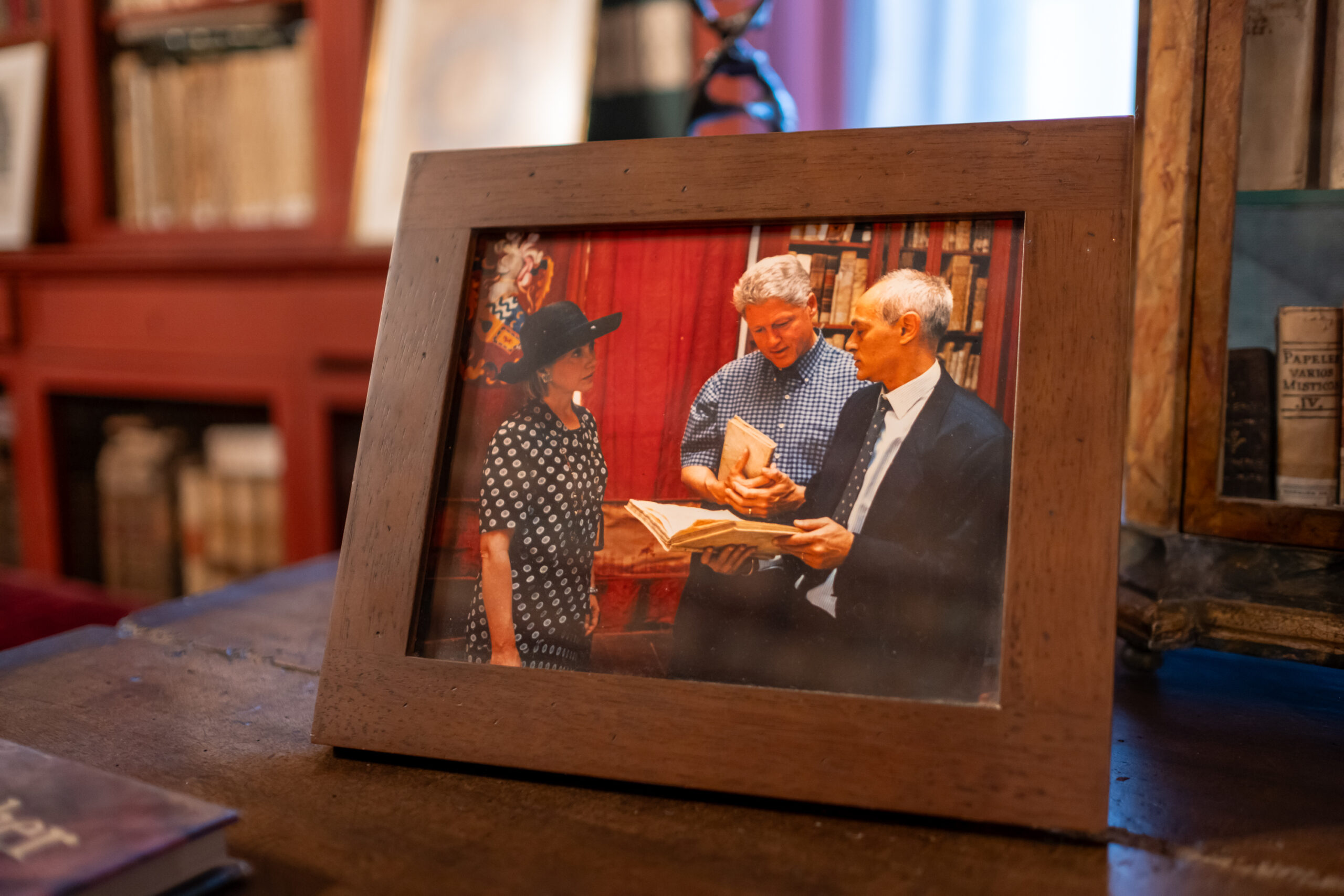
Royals and a Normal Family
Guests from all over the world have visited Can Vivot over the years. Among them the Emperor of Japan and the President of the United States. And they were probably just as impressed by the hosts as by their historic home. “We are a normal family,” Magdalena emphasizes. A nurse and a librarian, with three children, a dog and a cat.
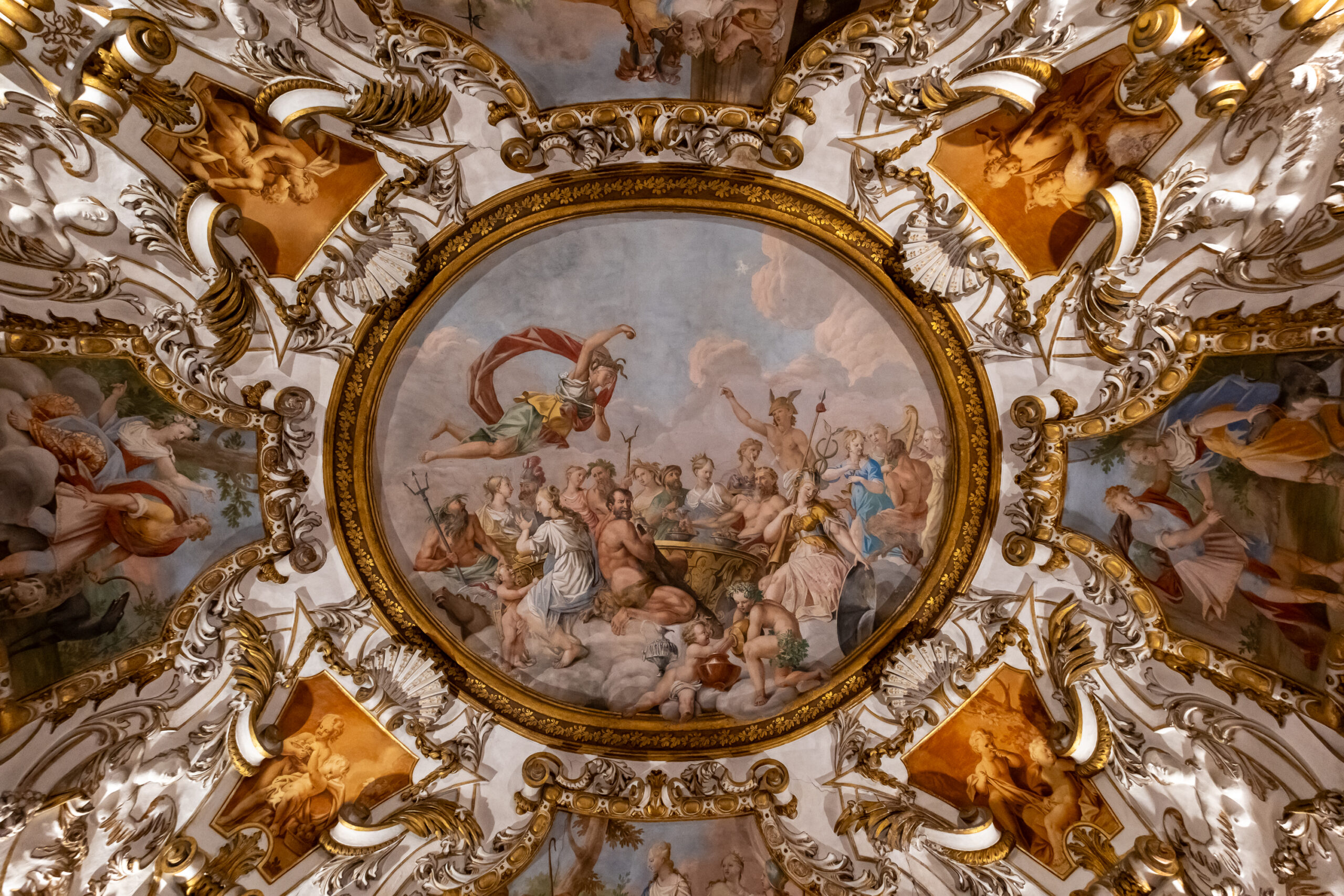
Keeping the patrimonio nacional is a major challenge for the family and one hopes that they receive the necessary support. After all, the preservation would not be feasible without public subsidies. The tours by appointment are not only a unique opportunity to experience history up close, but also a small contribution to maintaining a great cause.
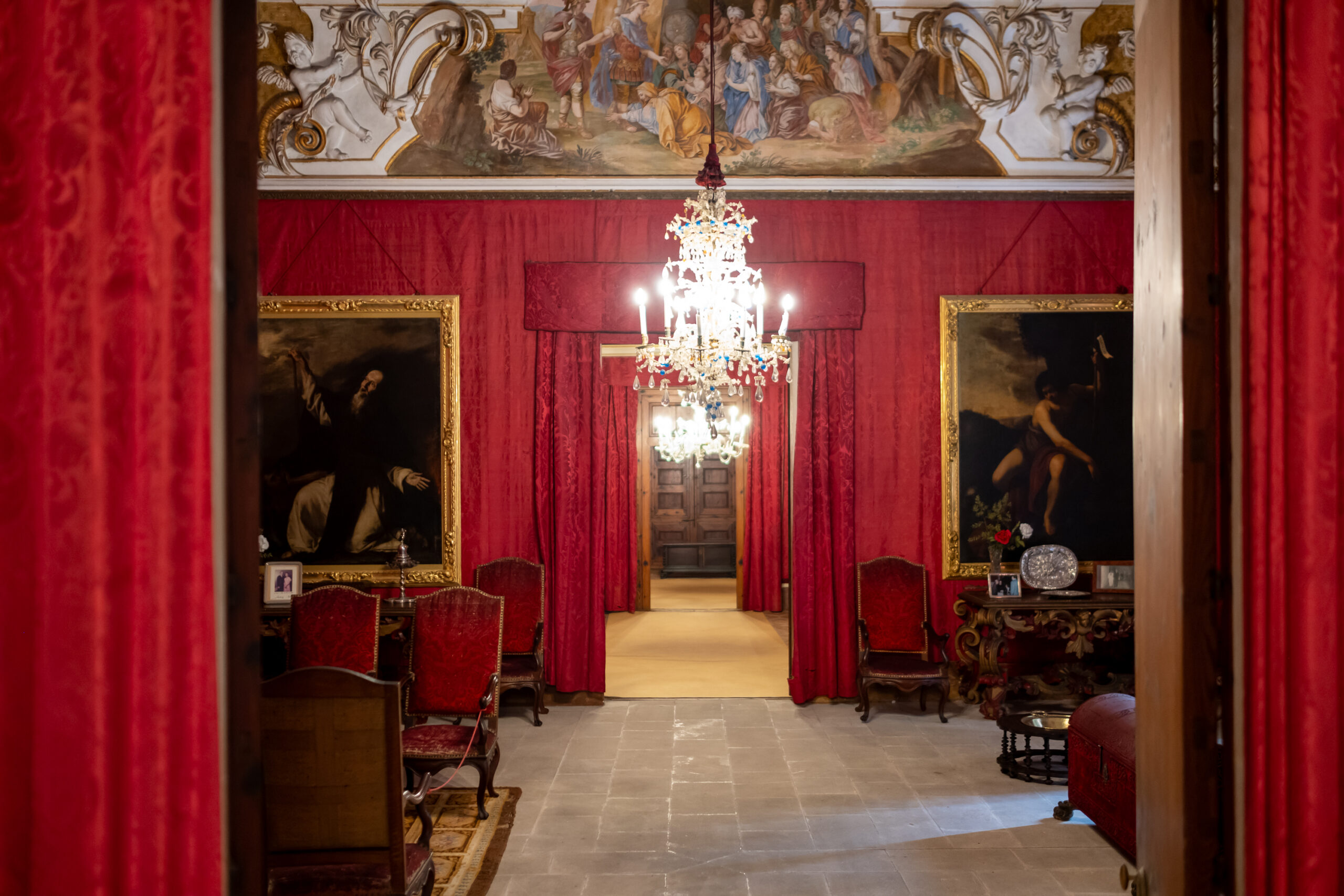
If you don’t know where you come from, you don’t know where you’re going. An awareness of history is certainly more than just a decorative accessory. It is a foundation for shaping the present and the future. ![]()
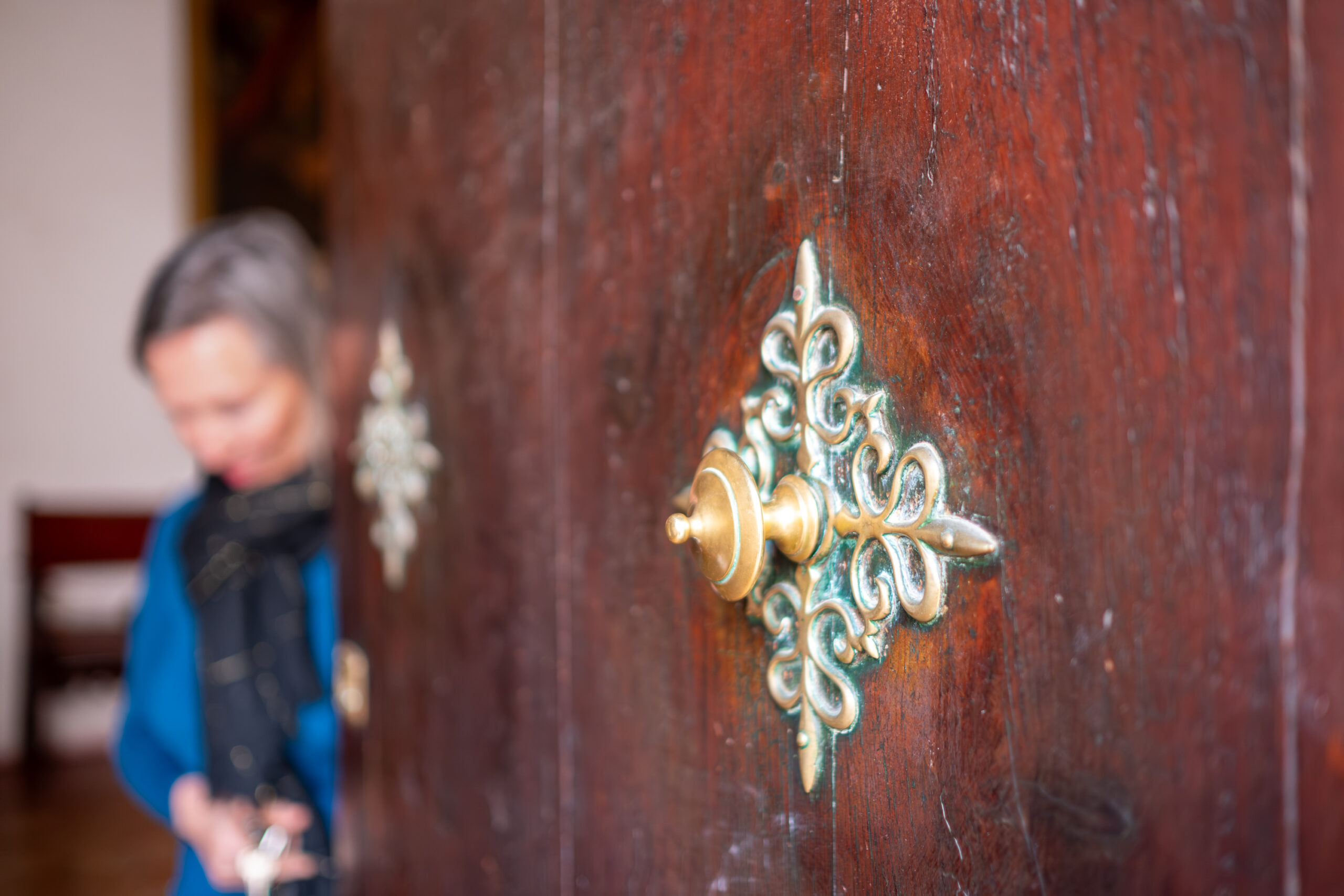
More information about Can Vivot and the guided tours, right here. Further details about XTANT and the program 2024, here.
C/ de Can Zavellà, 4
07001 Palma
T 671 707 131
website
info.canvivot@gmail.com

